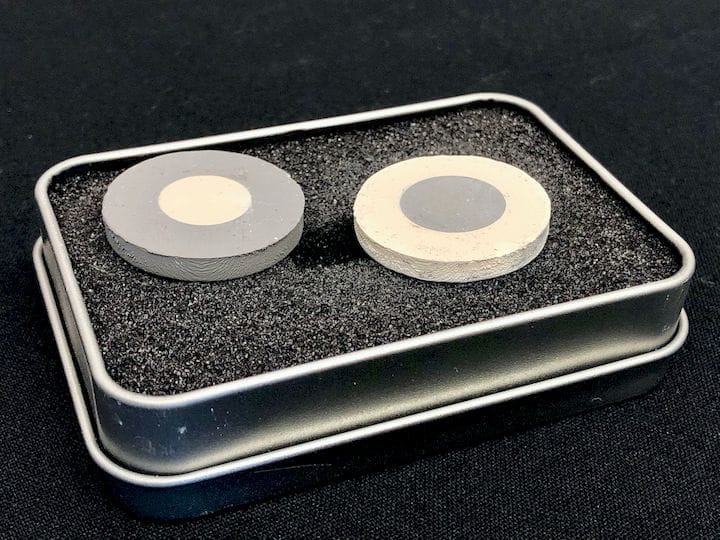
This week’s question relates to the ability of 3D printing to combine various types of materials.
Reader John asks:
“I have an overmolded component and would like to know if you can print both metal and plastic in one part? Or if you can print plastic over an existing metal piece.
Alternative is to replace the plastic by ceramic, so I can have a metal / ceramic combination component.”
Overmolding is a common manufacturing technique in which a material is overlaid on an existing object. Think of a rubber grip on a handheld drill, for example: the rubber material was overmolded onto the drill case. This is a very common practice, but one that isn’t always done with 3D printing.
The only method I’ve personally used to overmold a 3D printed part was using Stratasys’ PolyJet technology, where the 3D printing process can use more than one material. Their software allows one to define an “overmolding” and a layer of softer material can be bound to an underlying object.
But that’s a polymer on top of a polymer, so it doesn’t solve John’s problem.
For combining metal and polymer in a single print, this is really not possible. It’s because of the thermal requirements for handling the two different types of material. Polymers tend to soften around 200-400C, whereas metals melt at far higher temperatures. Those high temperatures would, in some cases, liquidize or even vaporize polymers if involved in the process. This would happen even in “cold” metal 3D printing processes, because the green prints produced still have to undergo a sintering process in a high temperature furnace.
The only way I can see to combine metal and polymer in a part is to print them both separately and assemble them afterwards. This could require design adjustments to account for the assembly process.
Could ceramic be exchanged for the polymer to solve the problem? I think the answer is yes and no.
To date there has been only one experiment that attempted to use both ceramic and metal materials in a single print. This was performed by XJET a couple of years ago, where they presented a couple of objects that contained both materials, and produced on their cold 3D printing process.
Their process requires a post-processing step to sinter the metal and ceramic particles, and they succeeded, at least in their experiment. See image at top for evidence this was actually done.
However, they haven’t pursued this angle much in recent times. I have a suspicion that the sintering process was the issue. Again, even though ceramic and metals require high temperatures, they require DIFFERENT high temperatures. That is a significant problem for sintering, as thermal expansion at different rates can cause all kinds of issues.
Even metal-only parts suffer from thermal considerations, as the geometry causes complex thermal flows within the part, and warping occurs naturally. Some systems actually attempt to predict the warp ahead of time and make adjustments to the original 3D model so that when the part warps, it will arrive at the desired geometry.
That process would be notably more complex if you were mixing ceramic in the part because there are differing rates of thermal expansion and different heat requirements.
Because of this there really aren’t any systems that can perform ceramic and metal 3D printing within the same print job.
The answer to the second question is, probably not. I’m afraid you’re going to have to make two or more parts and assemble them.
